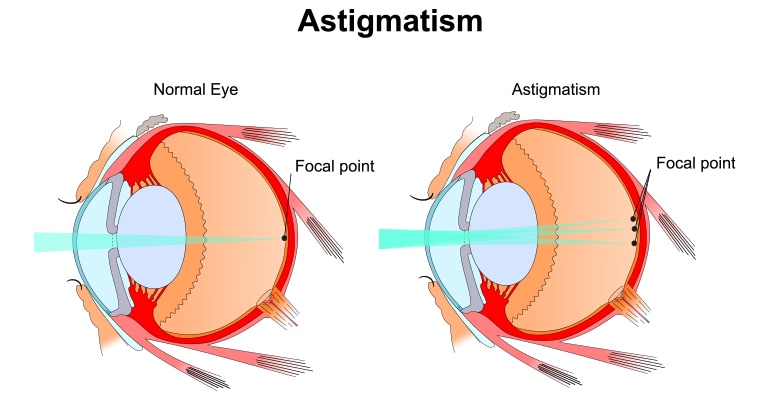Everything You Need to Know about Astigmatism
May 14, 2023

Many people focus only on myopia, but ignore astigmatism. In fact, astigmatism is also a very common eye disease. Here's everything you need to know about astigmatism.
What is Astigmatism?
Astigmatism is a refractive irregularity of the eye that is related to the curvature of the cornea. The disease is caused by the eye's optical system's inability to form a dotted image of the external point of view. Therefore, the common symptoms are blurred vision, amblyopia, visual fatigue, eye pain, tearing, and headache.
What Can Cause Astigmatism?
Astigmatism, in general, is mostly caused by congenital anomalies in the cornea. Some of them are also caused by acquired factors, such as long-term poor habits: lying down or squinting to read books. Therefore, the main method of daily eye care for astigmatism patients is to ensure regular rest, not to stay up late and avoid visual fatigue. Besides, it is advisable to pay attention to use your eyes in a correct way so as to avoid eye fatigue. Eating more fruits, especially citrus fruits and green vegetables can help you relieve eye strain effectively.
Side Effects of Astigmatism
1. Headache and eye soreness
If high astigmatism is not corrected, it may cause headache and sore eyes, and it is also easy to form some bad habits such as a tilted head. Therefore, severe astigmatism must be prevented and controlled in time.

2. Visual fatigue
Astigmatism is due to the different refractive power of each meridian, and the refraction of parallel rays cannot form a focal point but two focal lines. In order to see clearly, astigmatic eyes have to use and adjust their eyes as much as possible to reduce the size of the diffusion circle to improve the quality of the image. Therefore, it will lead to visual fatigue.
3. Blurred vision
People with severe astigmatism may feel blurred when they see distant objects or near objects. So they often have the habit of squinting their eyes into slits in an attempt to see objects more clearly.
4. Diminution of vision
Astigmatism is one kind of common eye problem that means the color of the visual markers in the direction away from the retinal focal line becomes lighter and the edges are blurred, making it difficult to recognize them, thus leading to vision diminution. In addition to physiological astigmatism, all kinds of astigmatism can easily cause vision diminution.
5. Amblyopia
Amblyopia is one of the most serious hazards of astigmatism. Most patients with high astigmatism, especially those with farsighted astigmatism, often have difficulty seeing things in the distance and near. So in this case, if you don’t take care of your eyes, it can easily lead to amblyopia or even strabismus.

How Can Astigmatism be Corrected?
Astigmatism can be corrected, and it is unnecessary to wear eyeglasses specially. If you are not nearsighted and only have astigmatism of less than 100 diopters, it will not affect your vision very much and you can take off glasses. But if the astigmatism is more serious and has affected your vision, then it is recommended that you correct the astigmatism and try to get the clearest vision. In this case, correcting astigmatism can improve your vision a lot.
In addition, it is advisable for you to develop good eye habits and know some tips about eye protection.
1. Develop good habits of using eyes
Instruct young children and yourself to develop good hygiene habits and not to touch their eyes with random hands or chemicals. Read books with adequate light, preferably from the left rear. The posture of reading should be correct and kept at a distance between 30cm and 40cm.
2. The font in your books should be clear and not too small
3. Don't watch TV for a long time and keep a distance from the TV when you watch it
4. Go to the optician's for regular check-ups every year
What Kind of Eyeglasses Should People with Astigmatism Choose?
It is generally recommended that people with astigmatism, especially high astigmatism, do not choose round eyewear frames, because astigmatism have axial position in 180 degrees, the lens of round eyewear frames may turn, then the axis will not be right. As a result, there will be blurred vision and a series of visual problems! In addition, it is recommended that you choose eyewear frames that matches your pupil distance. All in all, it is essential to measure your pupil distance and prefer to choose square eyewear frames and aviator eyewear frames.
People with high astigmatism also try not to choose large or oversized eyewear frames, because high astigmatism itself will bring a heavy shadow, and it may be heavier with large eyewear frames. Then the optical effect around the lens is almost all bad, the discomfort brought by astigmatism will be stronger, so the axis position must be accurate. So it is advisable to choose small eyeglasses.
